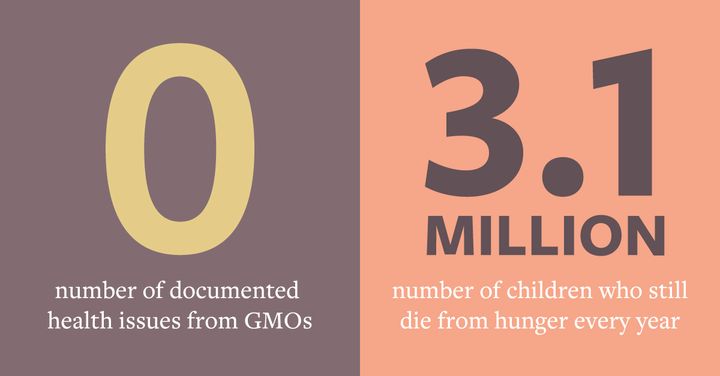
In 1934, a college student in Minnesota was studying for finals when his throat started to hurt. Then he developed a high fever. When it became hard to even swallow, he went to the hospital and received a devastating diagnosis: strep throat.
At that time, there was no treatment. The hospital intern was so sure the boy would die that he asked if he could cut out his lymph nodes for a research project – in front of the patient!
Fortunately, the patient pulled through, escaping the horrific strep-induced death that his wrestling teammate experienced shortly after he recovered.
So what does this story have to do with agriculture?

For one, the student that survived was Dr. Norman Borlaug (pictured, right), who later went on to win the Nobel Prize for breeding new varieties of wheat that saved more than a billion people from starvation and death. He did this despite strong adversity from people who were afraid of the new technology. Norm also became my mentor and friend, so I’m personally thankful he survived, as he helped guide me through some of the challenges of my own scientific career.
That story also reminds us what life was like before antibiotics. How many times have you or your kids had strep throat? How many times was survival a question? Science has transformed life in the developed world over the past 100 years. Thanks to medical advances like antibiotics and vaccines, global life expectancy has more than doubled and child mortality has gone down.
And agricultural advances like GMOs have made it possible for farmers to grow more crops using less land, water, and pesticides. By reducing the need to till, GMOs have also significantly reduced CO2 emissions – in 2015 alone, the reduction was equivalent to taking ~12 million cars off the road for one year!
Farm productivity has improved so much in the last 100 years that we’ve gone from nearly half the U.S. population living and working on farms to about 2%. That’s pretty amazing when you think about it! I think the other 98% of us tend to take for granted that we eat food – the number one key to survival – and we didn’t have to grow that food ourselves.
Science has liberated millions of people from spending their lives in fields pulling weeds and picking bugs off the crops in order to survive – and enabled them to go do other important things – like get an education, build roads and bridges, or invent the smartphone.
Most Americans are now so far removed from farming that they would probably be shocked by what they saw if they visited one. Today’s farms look more like Silicon Valley than “Green Acres.” Just like the smartphone changed our everyday lives, “smart farming” is transforming agriculture.
Modern agriculture is using a mix of digital tools, algorithms and artificial intelligence to give farmers access to actionable data. Drones are buzzing over fields assessing crop health and growth rates, and we’re using deep learning to identify diseases in real-time from the field – much like Facebook recognizes and wants to tag people in photos. Data gathered by satellites and sensors implanted in the soil can trigger precision-controlled drip irrigation and make fertilizer recommendations, so that each plant receives exactly the amount of water and nutrients it needs. In addition to saving water and energy, this minimizes fertilizer runoff.
When you combine this data-based decision-making with all the advances in biology and chemistry, I have no doubt that we are capable of feeding nearly 10 billion people by 2050, while using fewer natural resources. The question is – will we be allowed to do it – or will fear and nostalgia get in the way?
Just like in Norm Borlaug’s time, there are people today who don’t understand new technology and fear it. Instead of trying to learn how it works, they choose to pass that fear onto other people. They impede the development of public-private partnerships by tormenting academics who dare to work with private companies on research projects that could benefit everyone. And they put political pressure on regulators and government officials to restrict and ban the use of new technologies.
To capitalize on consumer fear, marketing firms create ad campaigns that yearn for the “better, simpler days” – creating nostalgia for something that, frankly, never existed. For example, there is no such thing as “natural food.” Nearly all the produce we eat has been bred by humans over thousands of years to look like the fruits and vegetables we know today. So…eating a carrot grown the way “nature intended it” would be like eating a tree branch.
As another example, I have no problem with organic crops, but organic farming is not healthier for people or better for the environment – despite what the marketing labels may lead people to believe.

And the simpler days were not better days. They looked more like the photo you see here. Earlier this year, Monsanto’s plant breeding team in Africa was in Zambia, where they saw corn kernels carefully spread out on the side of the road every few hundred meters.
You see, the villagers ran out of food from the last harvest, so they had to pull this corn from the fields early – before it was dry enough to use – then remove all the kernels, spread them out in the sun for several days, then gather them all back up so they could grind them into cornmeal to eat.
Can you imagine how long it takes to do all that work? Instead of doing the “other things” we can do that help society to advance – people in countries without access to modern agricultural technologies still spend their days literally just trying to find enough food to survive. If they were able to use the same seeds and tools as American farmers, what else might they be able to accomplish?
A few weeks ago, I shared these thoughts in a speech to global policy makers at the 2017 Concordia Annual Summit. When I did, I ended my comments by putting two numbers up on the screen:

- Zero. That’s the number of documented health issues from GMOs since they were adopted more than 20 years ago.
- 3.1 million. That’s the number of children who still die from hunger every year, mostly in countries that are not allowed to use modern ag technology.
To close that inhumane gap, our society must learn to trust peer-reviewed data instead of fearmongers and stand up for science.
We must move past fake news and enable scientists and farmers to keep moving forward with modern ag. Otherwise, we will be swept backward into a false nostalgia that lets us imagine we’re making changes that create a better world – when what we’re really doing is making the wrong decisions for the wrong reasons, enslaving people into the distant past and jeopardizing our future.
If you’d like to watch my presentation from the Concordia Summit, it’s available here; it starts at 06:02:48.
